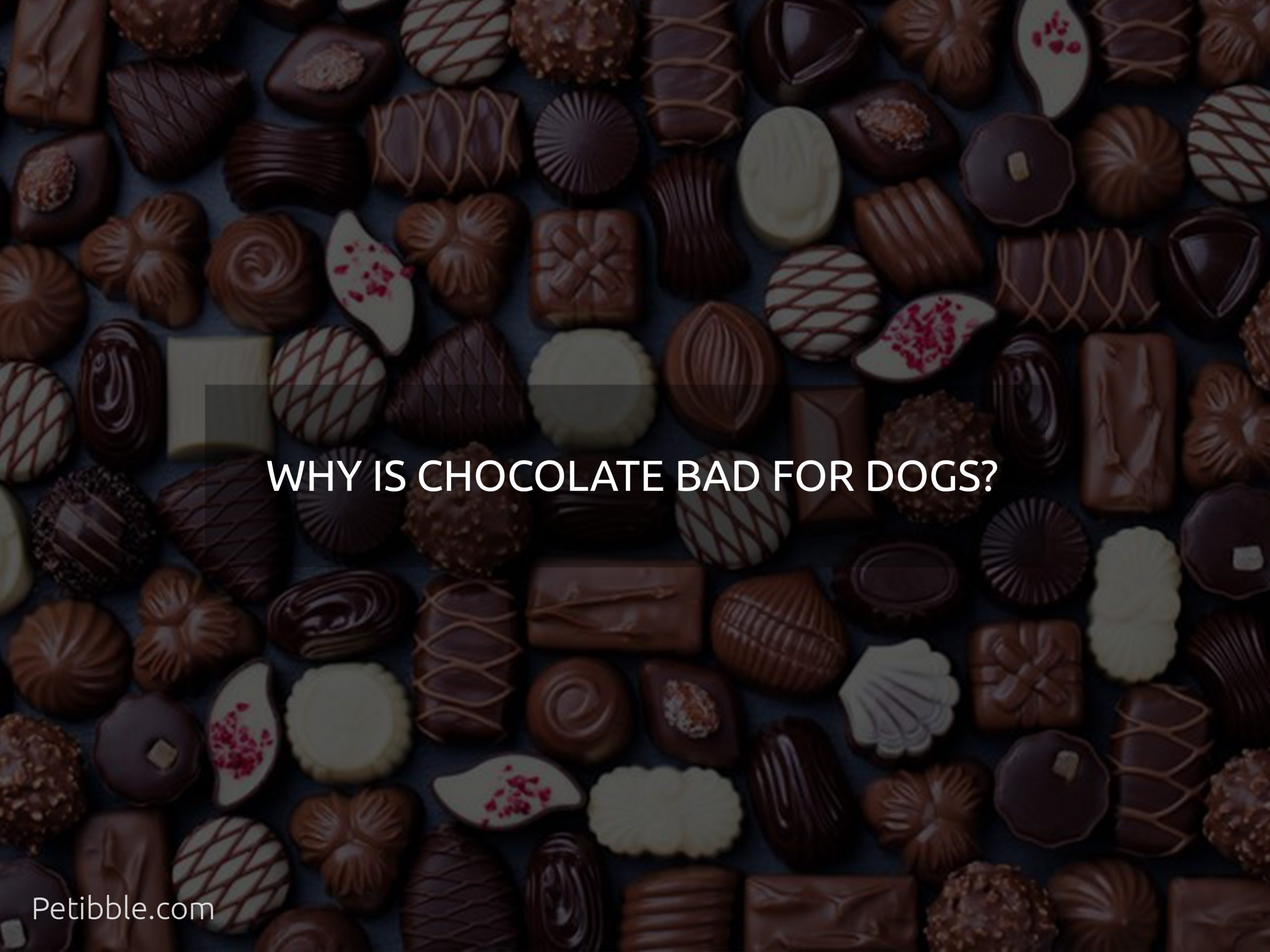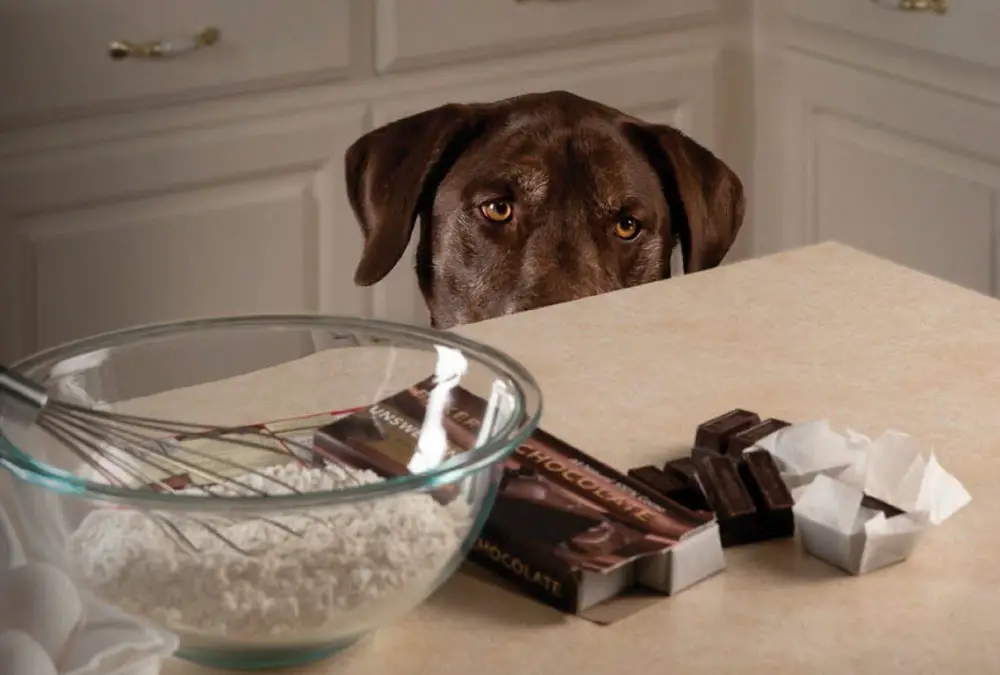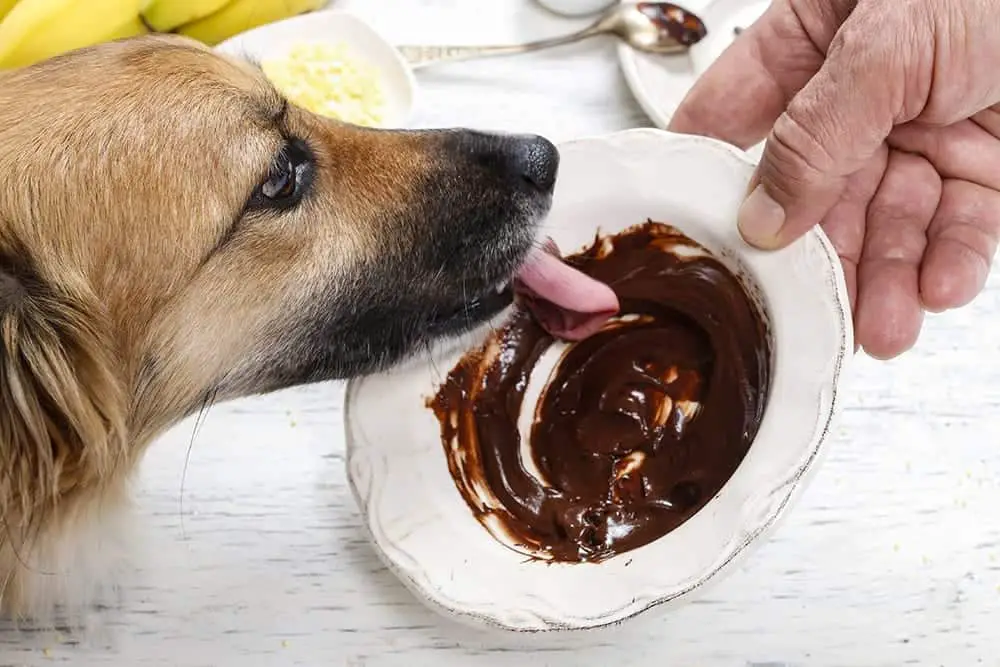The question “why is chocolate bad for dogs?” It has been bothering pet owners because of chocolate’s high-fat content. Although a piece of chocolate is considered a delicacy, the fat it contains can be toxic to the body. Chocolate contains at least sixty percent more calories than the nutritional content is worth. Dogs are not animals that choose what part of their diet they want to have. So while we all love chocolates on some level, this should be understood that chocolate can harm your dog’s health.

Is chocolate toxic for dogs?
Yes, chocolate can be harmful to dogs. While it’s not always fatal, consumption can lead to serious health issues. Chocolate is poisonous because it is a source of theobromine, a chemical, and caffeine. Theobromine is one of the major toxins in chocolate, like caffeine. Both chemicals are utilized to treat diuretics and heart stimulants blood vessel dilators, and relax the smooth muscle. Theobromine is not metabolized by dogs and caffeine the same way humans can. This is the reason canines are more sensitive to chemical impacts.
You may like: My dog ate a dead bird
Causes of Chocolate Poisoning in Dogs.
The type and amount of chocolate ingested by your pet will determine the level of poisoning. The more concentrated the level of theobromine in the chocolate, the more toxic the dose of chocolate toxicity. Though white chocolate and milk chocolate have lower levels of theobromine, the sugar and fat content can cause potentially life-threatening pancreatitis.
The darker and more bitter the chocolate, the more dangerous it is to dogs. Baking chocolate and dark chocolate are highly concentrated and contain 130-450 mg of theobromine per ounce. Common milk chocolate only has about 44-58 mg/ounce. White chocolate barely poses any threat of chocolate poisoning with only 0.25 mg of theobromine per ounce of chocolate.
Theobromine levels and effect on the body:
- 20mg theobromine per kg body weight – mild gastrointestinal symptoms
- Greater than 40mg/kg – heart arrhythmias
- Greater than 60mg/kg – muscle tremors, seizures
It causes constipation.
Lastly, chocolate is high in fat and acid. These fats can build up in your dog’s intestines, causing problems with absorption. If your dog isn’t getting enough vitamins, minerals, and water, it may become constipated and lose weight. Another possible side effect is that the acids in high-fat chocolates can eat away at the esophagus. As mentioned earlier, excessive chocolate consumption can cause your dog constipation, so you should limit your dog’s chocolate intake.

The impaction of milk.
One way is to minimize the amount of chocolate your dog eats by frequently cleaning their bowl. Another is to give your dog an extra half cup of milk in the evening. This milk will soften and soothe the insides of your dog’s intestines, helping them to expel their bowels more easily. The combination of milk and the extra chocolate will help minimize problems caused by theobromine and fat.
You may like: what kind of milk can puppies drink?
What are the symptoms of Chocolate Poisoning in your dog?
Symptoms may not appear until 6-12 hours after chocolate ingestion. Signs that your pet may have chocolate toxicity include:
- Vomiting
- Drooling
- Diarrhea
- Extreme thirst
- Increased urination
- Hyperactivity
- Pacing
- Panting
- Muscle tremors
- Seizures
Clinical signs depend on the amount and type of chocolate ingested. The most common clinical signs for many dogs are vomiting, diarrhea, seizures, and heart failure. Complications such as developing aspiration pneumonia from vomiting can make the prognosis for chocolate poisoning worse.

What to do if your dog has diarrhea?
Although some dogs may have digestive problems brought on by theobromine and fat, most dogs with this disease have only one problem: diarrhea. This is because chocolate contains theobromine and other compounds that cause diarrhea. If your dog has diarrhea, the first thing you should do is give your dog a cup of milk and cut up a chocolate bar. You should not give your dog the milk to drink, but you can give him a few chocolate bars as a treat. Consuming too much chocolate can have some serious consequences for your dog, so if you see your dog having issues with diarrhea, stop feeding him chocolate immediately and find out the cause of diarrhea.
What should I do if my dog eats chocolate?
Consult your veterinarian or the Pet Poison Helpline to see whether a toxic amount of chocolate was consumed. If a dose of chocolate toxicity were high, it is recommended to take your dog to an animal veterinarian right away. The sooner you begin treatment, the better the outcome for your dog.

Treatment of Chocolate Poisoning in Dogs
By the time symptoms of chocolate poisoning appear, supportive therapy is the only treatment. There is no antidote for chocolate toxicity.
- Inducing vomiting: Vomiting within 2 hours of chocolate ingestion to be effective.
- Activated charcoal absorption: In cases of chocolate ingestion, the veterinarian will often give a solution of activated charcoal orally to absorb any remaining theobromine from the gastrointestinal tract.
- Supportive therapy: Intravenous fluid administration can help to dilute theobromine levels in the bloodstream and promote excretion.
Conclusion.
As a pet owner, the first thing to do is get the chocolate out of your dog’s body. Moreover, Your vet might be able to induce vomiting if the dog has had chocolate within the past hour. Also, another reason to call your vet immediately after your dog has had chocolate is that they may be able to induce vomiting. It would be best if you did not attempt to make your dog vomit at home. Your vet might need to administer activated charcoal or intravenous fluids via a catheter to your dog if it has been longer than a few hours. This may be enough to treat your dog if they aren’t showing any signs of chocolate poisoning.





